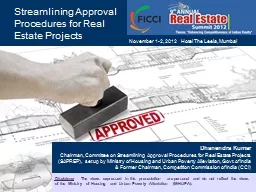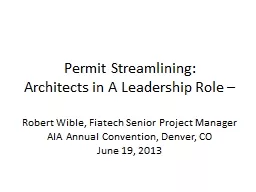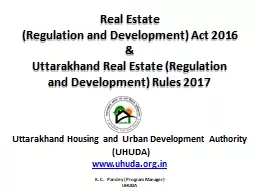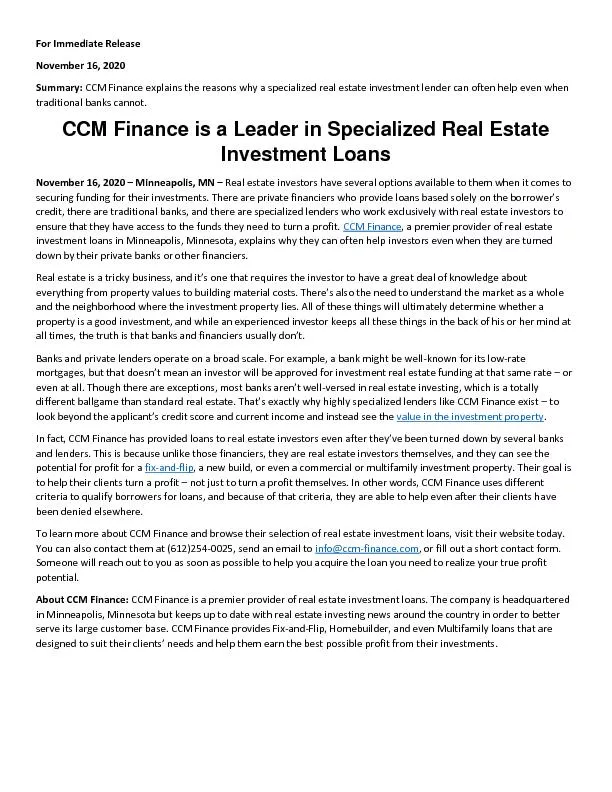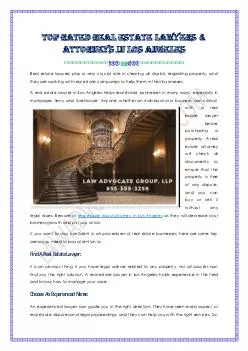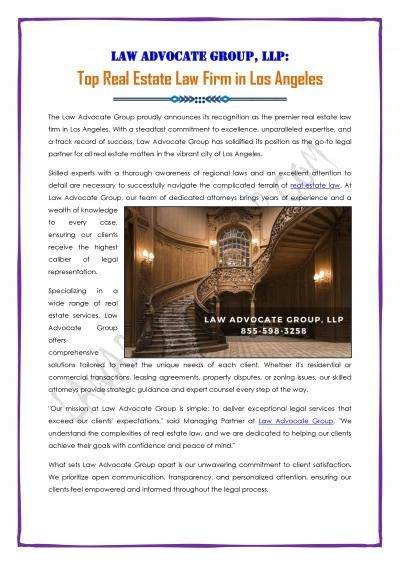PPT-Streamlining Approval Procedures for Real Estate Projects
Author : danika-pritchard | Published Date : 2016-02-26
Dhanendra Kumar Chairman Committee on Streamlining Approval Procedures for Real Estate Projects SAPREP set up by Ministry of Housing and Urban Poverty Alleviation
Presentation Embed Code
Download Presentation
Download Presentation The PPT/PDF document "Streamlining Approval Procedures for Rea..." is the property of its rightful owner. Permission is granted to download and print the materials on this website for personal, non-commercial use only, and to display it on your personal computer provided you do not modify the materials and that you retain all copyright notices contained in the materials. By downloading content from our website, you accept the terms of this agreement.
Streamlining Approval Procedures for Real Estate Projects: Transcript
Download Rules Of Document
"Streamlining Approval Procedures for Real Estate Projects"The content belongs to its owner. You may download and print it for personal use, without modification, and keep all copyright notices. By downloading, you agree to these terms.
Related Documents

